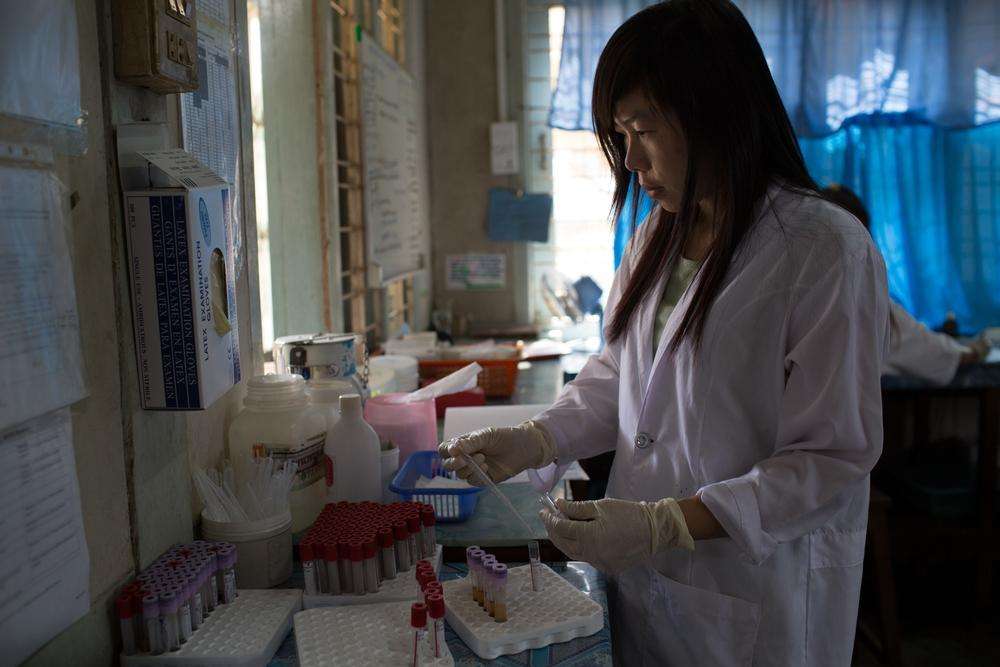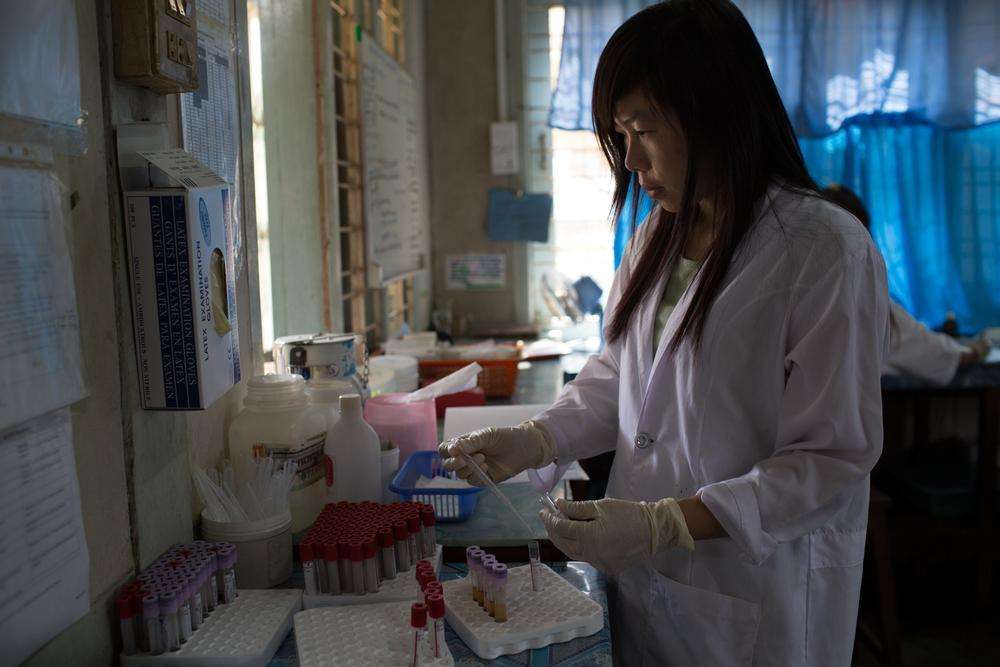VANCOUVER—At the International AIDS Society (IAS) Conference today, the international medical humanitarian organization Doctors Without Borders/Médecins Sans Frontières (MSF) warned that middle-income countries (MICs), which will be home to 70 percent of people living with HIV by 2020, face increasing threats to their ability to access affordable generic medicines, which are crucial to countries’ ability to reach the global UNAIDS 90/90/90* targets.
“No one can deny the pivotal role that affordable antiretrovirals have played in putting 15 million people on HIV treatment, but as we look ahead to the next 15 million, we see that middle-income countries are increasingly constrained in accessing affordable generic medicines, and this spells disaster for the global HIV response,” said Dr. Peter Saranchuk, TB/HIV Advisor for MSF.
The term ‘middle-income’ is an artificial classification that is not linked to public health realities on the ground—in fact, more than half of MSF’s medical programs are in MICs, including India, Kenya, Lesotho, Myanmar, and Swaziland. About 70 percent of the world’s poor live in MICs, and sixty percent of people with HIV live in these countries today.
“Multiple threats on MICs are converging to form an unprecedented assault on access to medicines,” said Leena Menghaney, head of MSF’s Access Campaign in South Asia. “Amongst other threats, some of the most acute come from trading partners—like the US and Japan—who seek to impose intellectual property rules that will block access to generic medicines; and from several donor agencies, including the Global Fund to Fight AIDS, Tuberculosis and Malaria, whose discriminatory policies are moving towards reducing funding for MICs at a time when global HIV targets call for increasing the pace of treatment scale-up.”
Today, we see that the pharmaceutical industry pricing strategies for antiretrovirals (ARVs) and other medicines, including tiered pricing, voluntary licensing, and donation programs, deliberately exclude middle-income countries, and are almost entirely focused on excluding MICs from accessing the lowest global prices available to low-income countries. This is particularly acute for third-line, or salvage regimens, which are priced out of reach for most countries. For example, the raltegravir, etravirine, darunavir, and ritonavir salvage regimen is available at the lowest global price for $1,854 per person per year (ppy), but middle-income countries often pay exponentially more: for example, Myanmar pays $2,929 ppy and Ukraine pays $16,409 ppy. Second-line treatments, and some newer first-line treatments, are also priced out of reach.
Later this week, negotiators for the Trans-Pacific Partnership (TPP) agreement will meet in Hawaii to try to finalize terms for a trade pact that will encompass at least 40 percent of the world’s GDP. One third of the 12 TPP countries are developing countries classified as middle-income economies who, if the deal is signed in its current form, would be forced to implement a range of new provisions that will lengthen, strengthen, and expand patent and regulatory monopolies for medicines. For example, one proposed rule limits governments' ability to restrict pharmaceutical companies' efforts to pursue abusive ‘evergreening’ strategies to extend the life of pharmaceutical patents well beyond 20 years. The effect is reduced ability to access affordable generic medicines.
Meanwhile, the Global Fund to Fight HIV/AIDS, Tuberculosis and Malaria’s ‘New Funding Model’ relies on a funding allocation formula based in part on income classifications, rather than public health needs. As a result, several MICs such as Ukraine and Vietnam have seen their funding reduced in the 2014–2016 funding period compared to previous years, limiting their ability to reach socially excluded groups.
“To make matters worse, India—known as the pharmacy of the developing world for its role in producing affordable generic medicines—is facing its own set of pressures from the U.S., EU, and other governments to roll back the country’s progressive patent laws in order to restrict generic competition, in favor of supporting the multinational pharmaceutical industry’s monopoly- and profit-driven business models,” said Menghaney. “If these policies are allowed to continue, middle-income countries face nothing short of a calamity that poses a major threat to the global HIV response and other health initiatives.”
MSF started providing HIV treatment to people in developing countries in 2000, and today supports more than 200,000 people living with HIV through MSF programs.
*UNAIDS 90/90/90 goal states by 2020, 90 percent of all people with HIV will know their status; 90 percent of people diagnosed with HIV will be on ARV treatment; and 90 percent of those on ARV treatment will have viral suppression.





